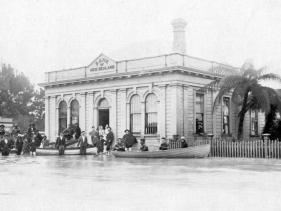For information on local attractions click here
To view images of Opotiki visit our Photo Gallery or click here
The name “Opotiki” originated from the name of a spring of the eastern bluff above Waiotahe Beach called “O-Potiki mai-Tawhiti.” This name goes back to the migration from Hawaiiki. It concerns a chief Tarawa who, left behind, decided to join his people whom he knew were in New Zealand. Tarawa, and his brother Tuwharanui, set sail for New Zealand in a canoe named Te Arautauta, accompanied by two Tanahanaha fish pets known as O-Potiki-mai Tawhiti, and meaning “two pets from afar.” Landing on the Waiōtahe Beach, Tarawa found a spring as an abode for his two fish pets. The spring thereafter became known as O-Potiki-mai-Tawhiti because of the continual reference to the inhabitant fish of the same name.
More Information
1769 - Captain James Cook passed down the Bay of Plenty coast. Early in the nineteenth century a few European and American traders and whalers began to visit.
1830s to 1840s trading and whaling ships, Māori Christian missionaries began to instruct in literacy and religion.
1840 the Treaty of Waitangi was taken around to be signed. John A Wilson a lay missionary of the Church Missionary Society established the Opotiki mission in 1840. French missionaries moved into the area soon after this. At this period, the village at Opotiki was known as Pā Kowhai. There were other important villages at Tunapāhore and Te Kaha.
The 1850s to 1860s saw continued development. The Māori tribes took up European agricultural methods and crops, primarily wheat, pigs and peaches, which were traded with Auckland.There were still only a few Westerners living in the district, fewer still of whom were British by birth. Among these foreigners were Dr Albert Agassiz (1840–1910), distant cousin of the famous Swiss/American scientist Louis Agassiz, and Carl Völkner, a German missionary who had gone over to the Anglican Church.
Source: Opotiki District Council, Wikipedia

